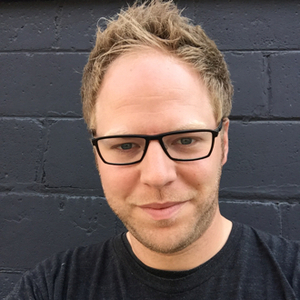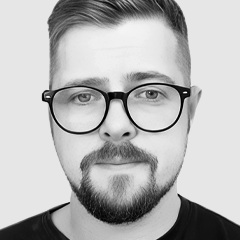A successful design system begins with strategic planning and well-defined ownership. This service establishes governance frameworks, team structures, and workflows tailored to your organization’s needs. Whether your organization prefers a dedicated team or rotational responsibilities among existing team members, we ensure your design system is set up to support long-term growth and maintain consistency across all projects. We also provide guidance on avoiding system entropy and ensuring your design system remains scalable and sustainable, adapting to future needs as your organization evolves.
Design systems
Ramotion specializes in creating cohesive design systems with reusable components, style guides, and comprehensive documentation for consistent digital product development.
Featured clients
We specialize in building scalable, efficient, and consistent design systems for businesses of all sizes, from early-stage startups to Fortune 500 companies, helping them achieve their business goals.
Series of visual concepts for improving the user experience
Marketing website for a subsidiary of the CBRE Group's co-working space company
Iconography design for a payments infrastructure company with 250M+ API request per day
Official Apple tvOS app user interface development
Official Firefox rebrand and ongoing support for design projects at Mozilla
Brand identity design for an internal App Store by Universal Music
Visual identity for Adobe-owned company products
Ongoing design support for the leading destination for company insights
Designing a motion identity for Opera
Brand and marketing design support for an open source data structure server company
Ongoing design and development collaboration with an enterprise identity provider
Iconography guidelines, assets and web design for a digital forensics solution company
Redesign of the support portal and 30% improvement in users’ ability to get the answers they want
Design for a membership-based healthcare system
Iconography for a secure workspace software company with over 16 million cloud users
Rebranding for an open-source web testing platform with 5 million weekly downloads
Design for the world's first audio word processor
Brand identity for a secure data onboarding solution that processed more than 25 billion records
Website design for a B2B data provider platform with over 50 million company records
Brand identity and website for a tool used by over 80% of Fortune 50 companies' machine learning teams
Rebranding an e-commerce solution used by 180,000 entrepreneurs
Website for a blockchain data storage network that raised more than $250M+ at ICO
Rapid prototyping for an accounting software company with over 3.7 million subscribers
UX design for a medical group and technology company with a network of nearly 140,000 licensed doctors
Iconography design system for 500 million users around the world
Ongoing UX design and CRO for child care and education company with more than 200,000 children enrolled
Developing micro-interactions for the Lightning Design System
Marketing website for the cross channel marketing platform
Brand identity for a multi-chain crypto trading and liquidity hub with $10B+ in trading volume
Design for a global video game commerce company
Capabilities
Process
Industries
Design system strategy & team setup
Web design systems
Efficient design systems are critical for marketing teams and developers working on digital products. Our Web Design Systems service focuses on creating pre-coded component libraries, sections, and templates that streamline the creation and deployment of web pages. These systems are designed to empower marketing teams to create dynamic, branded content rapidly, without requiring extensive design or development expertise. By leveraging platforms like Webflow or implementing custom solutions through JAMstack, we enable teams to test hypotheses, launch campaigns, and iterate faster, all while maintaining brand consistency.
Design system development
Creating a scalable design system requires the right tools and a streamlined approach. Our design system services focus on building reusable components optimized for consistency and performance. Using Storybook, we develop and test components in isolation, ensuring they are robust and easy to integrate into larger products.
For framework compatibility, we use Lit to create lightweight, framework-agnostic web components that function seamlessly across React, Angular, Vue.js, and more. Styling is managed with Tailwind, a utility-first CSS framework that ensures flexibility and consistent application of design tokens across components.
We integrate these tools into a centralized design system, supported by a set of guidelines for seamless implementation and ongoing maintenance. This process bridges design and development, empowering teams to collaborate effectively while delivering cohesive and user-friendly digital products.
Product design systems
For organizations creating digital products, a robust design system enables scalability and consistency. Our Product Design Systems service focuses on crafting reusable design patterns, user flows, and interaction models. Delivered through tools like Figma, these systems feature well-structured libraries, adaptive components, and multi-platform compatibility. Whether for iOS, Android, or web, these design systems are built to ensure that every product element aligns with your brand’s strategic objectives and enhances the user experience.
Brand design systems
Brand consistency across all communication channels is essential for building recognition and trust. Our design system services include the development of customizable templates, reusable principles, and visual assets that support internal and external communications. This includes everything from investor presentations and marketing collateral to social media templates and event materials. By reducing dependency on stock visuals and standardizing design practices, we help teams produce cohesive and impactful branded materials efficiently.
Motion design systems
Motion design enhances user experience by adding a dynamic and interactive layer to design systems. This service includes creating motion principles and reusable assets such as transitions, micro-interactions, and animations. These elements are embedded into your design system to ensure consistency in how movement is applied across all digital products. Whether for web interfaces or mobile applications, motion assets enhance storytelling, improve usability, and elevate the overall user experience.
Iconography systems
Custom icons are an integral part of any comprehensive design system. Our design system services for iconography focus on creating scalable, accessible icon sets that align with your brand’s visual identity and functional requirements. These icons enhance usability and clarity, offering a consistent visual language across platforms. With careful attention to detail, our icon sets are designed to be both aesthetically pleasing and highly functional, supporting a wide range of applications in digital products and beyond.
More about services
Discovery & alignment
As a trusted design system agency, we begin each project with a discovery phase to understand your organization’s specific needs, challenges, and goals. Through collaborative workshops, stakeholder interviews, and detailed audits, we gather insights into your current workflows, tools, and pain points. This phase lays the foundation for creating a tailored design system that aligns with your broader business objectives while addressing key operational challenges.
System Architecture & strategy
This phase focuses on defining the structure, principles, and governance model for your design system. By establishing a set of guidelines for scalability, documentation, and workflow integration, we create a framework that serves as a single source of truth. These guidelines ensure clarity and consistency, enabling teams to work more efficiently while maintaining alignment with the organization’s overall strategy. A robust architecture sets the stage for seamless implementation and long-term adaptability.
Component & asset development
The core of our design system services lies in creating reusable components and assets that form the foundation of your digital products. During this phase, we design and develop tokens, components, and templates optimized for usability and accessibility. Each component is rigorously tested and refined through iterative feedback loops, ensuring it meets functional, aesthetic, and technical standards. By leveraging tools like Storybook and Figma, we create scalable systems that integrate seamlessly into your organization’s workflows.
Integration & testing
Successful adoption of a design system requires seamless integration with your existing tools, platforms, and workflows. This phase involves implementing the design system within your digital ecosystem, conducting extensive testing to ensure components function consistently and effectively. Our testing process prioritizes performance, accessibility, and user experience, ensuring that every element of the system aligns with your organizational needs and goals.
Onboarding & training
For any design system to be effective, teams must understand how to use and maintain it. We provide comprehensive onboarding resources, including training sessions and a centralized set of guidelines that detail best practices for component usage, updates, and governance. These resources empower your teams to apply the design system confidently, fostering a culture of collaboration and consistency across your organization.
Continuous evolution
Design systems are living frameworks that must adapt to changes in technology, user needs, and organizational goals. As part of our design system services, we offer ongoing support to refine components, expand libraries, and update documentation as your requirements evolve. This ensures your design system remains relevant, scalable, and effective in supporting both day-to-day operations and long-term objectives.
More about process
B2B
Streamlined component libraries for scalable architecture and enterprise user workflows.
SaaS
Modular components ensure multi-platform usability in dynamic cloud interfaces.
Fintech
Secured transaction systems with financial dashboards and data visualization tools.
Cybersecurity
Secure workflows meet compliance standards with threat monitoring interfaces.
Healthcare
Patient portals integrate medical data standards with accessibility-compliant design.
Startups
Agile frameworks enable rapid prototyping and scalable branding for startups.
Design system benefits
Consistency
Ensures uniform design elements across platforms, enhancing brand recognition and trust.
Efficiency
Streamlines design with reusable components, enabling teams to focus on problem-solving.
Scalability
Facilitates easy scaling of products by using existing components for new features.
Collaboration
Enhances teamwork by providing a centralized resource for designers, developers, and stakeholders.
Improved quality
Maintains high design standards, reducing errors and inconsistencies for a better user experience.
Faster onboarding
Helps new team members quickly learn processes and guidelines, making onboarding smoother.
Proven by numbers
Our clients experience tangible benefits from design systems, including improved efficiency, seamless collaboration, and reduced costs. These measurable outcomes foster consistency and user satisfaction, enabling rapid innovation and delivering impactful, scalable digital products.
IPO for Cellebrite
$2.4BImprovement in self-service for Turo
58%Ninox after-trial retention increased
+30%Completed sessions in Tile onboarding
+60%Case studies
Firefox’s identity system enhanced brand recognition, improved user engagement, and reinforced its fast, private, user-centric identity.
We have been elevating Cellebrite’s design since 2018, from their IPO in 2021 and beyond, driving continued growth.
Developing the Lightning Design System micro-interactions, boosting user engagement and efficiency, enhancing overall user satisfaction.
What our
partners say
ReviewsWhy Ramotion?
Ramotion is a design system agency that offers expertise in creating cohesive frameworks, aligning visual identity with functionality while leveraging industry standards to elevate user engagement and design efficiency.
Years in business
15+Distributed team members
70+Design systems created
30+Avg. rating on DesignRush & Clutch
4.9Awards & recognition
More awards- Best App of the Year
- App of The Week
- App Store Editors' Choice
Top Design System Company
Best Design Systems Agency
10 Best Apps of the Year
Best Application Design Company
Additional services
Insights
FAQ
Branding
Build trust and recognition through cohesive branding, visual design, and strategy.
Web design
Create responsive websites with intuitive navigation, great design and optimised performance.
UX design
Boost usability with user-centric research, interaction design, and functional prototypes.
App design
Design platform-specific apps with intuitive flows, polished interfaces, and user retention.
Web app development
Develop web apps with robust backend, sleek frontend, and seamless API integration.
Brand strategy
Develop a targeted, value-driven approach to attract audiences and outpace your competitors.
Design System vs Component Library
Learn about design system vs component library in UI/UX design. What are the major differences between these two terms and why is it important?
Aug 29, 2024Read moreBrand Design System
The brand design system has many benefits that the company could not ignore. Get its understanding with our guide to make it work for your business.
Feb 16, 2024Read moreEnterprise Design System
What is an enterprise design system and is it really important? Learn all you need to know about a consistent design system for modern organizations.
Aug 29, 2024Read moreWhat is a design system?
A design system is a comprehensive set of guidelines, reusable components, and tools that help teams build cohesive and consistent digital products. Think of it as the blueprint for design and development – streamlining collaboration, saving time, and ensuring your brand's identity shines across every touchpoint.
Whether you're designing a website or developing an app, a design system serves as your creative compass.Why is a design system important for your brand?
Consistency is key to building trust and recognition. A design system ensures your visual language and user experience are aligned, no matter who’s designing or developing. It reduces inefficiencies, empowers creativity, and accelerates product development, allowing your team to focus on delivering value to your customers.
With a design system, you can scale your brand effortlessly while maintaining a seamless user experience.How do I implement a design system in my organization?
Implementing a design system starts with aligning your team on its importance and purpose. Begin by auditing your current design and development assets, then build a scalable framework.
Collaborate across teams to define reusable components, style guides, and documentation.
Finally, ensure ongoing maintenance by setting up governance processes and encouraging adoption through training and communication.









